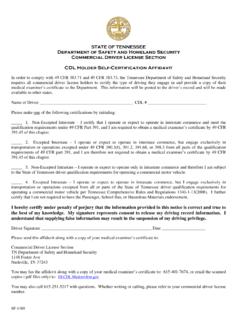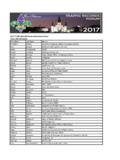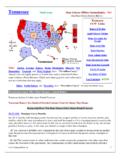Transcription of Integration Of Safety Into The Design Process - …
1 NOT MEASUREMENT SENSITIVE DOE-STD-1189-2008 March 2008 DOE STANDARD Integration OF Safety into THE Design Process department of Energy AREA SAFT Washington, DC 20585 DISTRIBUTION STATEMENT A. Approved for public release; distribution is Page ii This document is available on the department of Energy Technical Standards Program Web Page at DOE-STD-1189-2008 Page iii PREFACE The department of Energy (DOE) has approved this Standard for use by DOE and its contractors. In a memorandum to DOE elements, dated December 5, 2005, on Integration of Safety -in- Design , the Deputy Secretary of Energy stated, I expect Safety to be fully integrated into Design early in the project. Specifically, by the start of the preliminary Design , I expect a hazard analysis of alternatives to be complete and the Safety requirements for the Design to be established. I expect both the project management and Safety directives to lead projects on the right path so that Safety issues are identified and addressed adequately early in the project Design .
2 DOE Standard 1189 has been developed to show how project management, engineering Design , and Safety analyses can interact to successfully implement the Deputy Secretary s expectations. These interactions are a fundamental element necessary in the Integration of Safety throughout the DOE Acquisition Management System. They are key to the timely identification, evaluation, and adjudication of Safety -in- Design issues early in project life. This Standard provides the department s expectations for incorporating Safety into the Design Process for new or major modifications to DOE Hazard Category 1, 2, and 3 nuclear facilities, the intended purpose of which involves the handling of hazardous materials, both radiological and chemical, in a way that provides adequate protection for the public, workers, and the environment. The Standard describes the Safety -in- Design philosophies to be used with the project management requirements of DOE Order (O) , Change (Chg) 1, Program and Project Management for the Acquisition of Capital Assets, and incorporates the facility Safety criteria in DOE O , Facility Safety , as a key foundation for Safety -in- Design determinations.
3 The requirements provided in the above DOE Orders and the expectations in this Standard provide for identification of hazards early in the project and the use of an integrated team approach to Design Safety into the facility. The basic Safety -in- Design precepts are as follows: appropriate and reasonably conservative Safety structures, systems, and components are selected early in project designs; project cost estimates include these structures, systems, and components; and project risks associated with Safety structures, systems, and components selections are specified for informed risk decision-making by the Project Approval Authorities. The provisions of this Standard, when implemented in conjunction with DOE O , Chg 1, and its guidance documents, are consistent with the core functions and guiding principles of Integrated Safety Management (ISM), as described in DOE P , Integrated Safety Management Policy.
4 The Standard provides guidance on a Process of Integration of Safety -in- Design intended to implement the applicable ISM core functions define the work, analyze the hazards, establish the controls necessary to provide protection of the public, workers, and the environment from DOE-STD-1189-2008 Page iv harmful effects of radiation and other such toxic and hazardous aspects attendant to the work. Important ISM guiding principles involved in this Process and addressed in this Standard are identification of Safety standards and requirements and development of hazard controls tailored to the work to be performed. The Process includes documentation and timely review of Safety Design evolution to ensure feedback and improvement, leading to Design and construction that can lead to operations authorization. The Standard does not instruct designers how to Design nor instruct Safety personnel how to perform Safety analyses.
5 Rather, the Standard provides guidance on how these two disciplines and project management can interface and work together to incorporate Safety into Design . A project is expected to evolve over time, and the project Safety Design basis is also expected to evolve. The expectation is that within this evolution Process , unanticipated issues will be minimized. Some of the key concepts that are included in the Standard are the following. 1. The importance of the Integrated Project Teams (IPT), federal and contractor, including a contractor Safety Design Integration Team (SDIT), and effective coordination among these teams. The SDIT comprises both Safety and Design subject matter experts and is the heart of the Safety and Design Integration effort. 2. The development of a Safety Design Strategy (SDS) that provides a roadmap for strategizing how important Safety issues will be addressed in the Design and in the tailoring in the development of key Safety documentation.
6 The SDS should be initiated based on a statement of DOE expectations for Safety -in- Design developed during the pre-conceptual stage and should be submitted during the conceptual Design stage and updated and refined through the Design Process . 3. The development, in the conceptual Design stage, of facility-level Design basis accidents (DBA) that provide the necessary input to the identification and classification of important Safety functions. These classifications ( , Safety class, Safety significant, seismic Design basis) provide Design expectations for Safety structures, systems, and components (SSC). 4. The development of objective radiological criteria for Safety and Design classification of SSCs. These criteria relate to public and collocated worker- Safety Design considerations. 5. The identification and application of nuclear Safety Design criteria as provided by DOE O and its associated guides.
7 6. The development of guidance for the preparation of a Conceptual Safety Design Report (CSDR), a Preliminary Safety Design Report (PSDR), and the Preliminary Documented Safety Analysis (PDSA). These reports are required by DOE O , Chg 1, for Hazard Category 1, 2, and 3 nuclear facilities, and they must be approved by DOE as part of the project approvals to proceed to the next Design or construction phase. The intent of these reports and their approval is to ensure that the directions and decisions made regarding project Safety are explicitly identified and dealt with in early stages of Design . The objective is to reduce the likelihood of costly late reversals of Design decisions involving Safety . DOE-STD-1189-2008 Page v 7. The definition, as needed, of a Risk and Opportunities Assessment that recognizes the risks of proceeding at early stages of Design (especially conceptual Design ) on the basis of incomplete knowledge or assumptions regarding Safety issues and the opportunities that may arise during preliminary and final Design to reduce costs through alternative or refined Design concepts or better knowledge regarding the uncertainties.
8 This assessment is intended to be input to the Risk Management Plan assessments for a project. These key elements of the Standard have several intersections and possible overlaps with the guides for the implementation of DOE O , Chg 1. These guides should also be consulted for more complete information on the associated activities and documents. In addition, several directives and standards deal with some aspects of Safety -in- Design that are also addressed in this Standard, such as Safety system classification and seismic Design bases. For new facility Design , these directives and standards are supplemented by this Standard. The directives and standards in this category are as follows: DOE G , Nonreactor Nuclear Safety Design Criteria and Explosive Safety Guide for use with DOE O Facility Safety ; DOE G , Guide for the Mitigation of Natural Phenomena Hazards for DOE Nuclear Facilities and Nonnuclear Facilities; DOE G 421-1-2, Implementation Guide for Use in Developing Documented Safety Analyses to Meet Subpart B of 10 CFR 830; DOE-STD-1020-2002, Natural Phenomena Hazards Design and Evaluation Criteria for department of Energy Facilities; DOE-STD-1021-93, Natural Phenomena Hazards Performance Categorization Guidelines for Structures, Systems, and Components; and DOE-STD-3009-94, Change Notice (CN) 3, Preparation Guide for department of Energy Nonreactor Nuclear Facility Safety Analysis.
9 Nuclear Safety Design basis documents required by DOE O , Chg 1 and by Title 10, Code of Federal Regulations (CFR) Part 830, Nuclear Safety Management, Subpart B, Safety Basis Requirements, for new projects and major modifications must be developed consistent with the expectations and guidance in this Standard. There are a number of DOE Directives and Technical Standards specifically referenced in this Standard. Unless specifically prohibited or limited, successor documents may be used in place of the referenced directive or standard. Successor documents are subsequent revisions to the specified directives and standards issued through the DOE Directives System or DOE Technical Standards Program, as applicable, (for example, DOE O would be a successor document to DOE O ) or the documents that replace them as defined within those programs (for example, a DOE directive may cancel all or part of a directive and replace those provisions with new provisions in a new directive).
10 However, documents issued outside the Directives System and the Technical Standards Program are not considered to be successor documents to these directives and standards. Contracts and regulations may require that specific revisions be applied, particularly for individual projects (for example, 10 CFR Part 830 requires that hazard categorization be performed consistent with DOE-STD-1027-92, Change Notice 1, September DOE-STD-1189-2008 Page vi 1997). The provisions of 10 CFR Part 830, Appendix A to Subpart B, Table 2, (known as the safe harbor methodologies for 10 CFR Part 830) specifically permit use of successor documents for the listed directives and standards. DOE-STD-1189-2008 Page vii Safety Design GUIDING PRINCIPLES 1. DOE Order , Facility Safety , is utilized and addressed in Design activities, as applicable. Design teams should be able to clearly articulate strategies in the Design that address DOE O expectations and include them in the Design / Safety basis information.
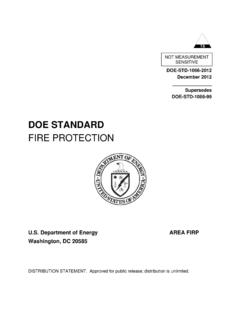
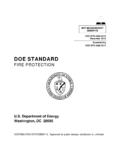
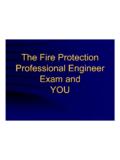
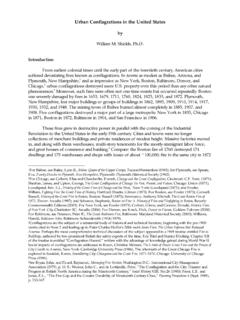
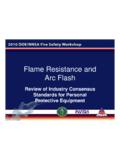
![SFPE Equation Sheet [KL 10-19-2015]](/cache/preview/c/f/3/c/2/1/e/4/thumb-cf3c21e48064d8fdafc6507dedc08886.jpg)
